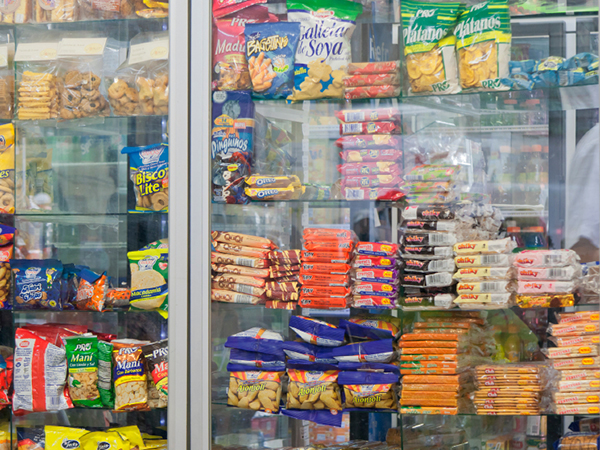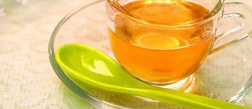Your Location:Home - Hot Topics > - Content
News and Information
Processed Foods: What's OK and What to Avoid
Time:2017-04-21 12:56:28
Source:Academy of Nutrition and Dietetics

Processed food has a bad reputation as a diet saboteur. It's blamed for our nation's obesity epidemic, high blood pressure and the rise of Type 2 diabetes. But processed food is more than boxed macaroni and cheese, potato chips and drive-thru hamburgers. It may be a surprise to learn that whole-wheat bread, homemade soup or a chopped apple also are processed foods.
While some processed foods should be consumed with caution, many actually have a place in a balanced diet. Here's how to sort the nutritious from the not-so-nutritious.
What Is Processed Food?
"The term processed food includes any food that has been purposely changed in some way prior to consumption," says Torey Armul, MS, RD, CSSD, LDN, a spokesperson for the Academy of Nutrition and Dietetics. "It includes food that has been cooked, canned, frozen, packaged or changed in nutritional composition with fortifying, preserving or preparing in different ways." For example, Armul considers white bread refined since most of the healthy fiber has been removed during the processing. "Any time we cook, bake or prepare food, we're processing food. It's also the origin of the term 'food processor,' which can be a helpful and convenient tool for preparing healthy meals."
Processed food falls on a spectrum from minimally to heavily processed:
l Minimally processed foods — such as bagged spinach, cut vegetables and roasted nuts — often are simply pre-prepped for convenience.
l Foods processed at their peak to lock in nutritional quality and freshness include canned tomatoes, frozen fruit and vegetables, and canned tuna.
l Foods with ingredients added for flavor and texture (sweeteners, spices, oils, colors and preservatives) include jarred pasta sauce, salad dressing, yogurt and cake mixes.
l Ready-to-eat foods — such as crackers, granola and deli meat — are more heavily processed.
l The most heavily processed foods often are pre-made meals including frozen pizza and microwaveable dinners.
The Positives of Processed
Processed food can be beneficial to your diet. Milk and juices sometimes are fortified with calcium and vitamin D, and breakfast cereals may have added fiber. Canned fruit (packed in water or its own juice) is a good option when fresh fruit is not available. Some minimally processed food such as pre-cut vegetables are quality convenience foods for busy people.
"The trick is to distinguish between foods that have been lightly processed versus heavily processed," says Armul. "Lightly processed foods include pre-cut apple slices, hard-boiled eggs, canned tuna and frozen vegetables. These are nutritious choices and can make healthy eating more convenient for busy people. Heavily processed foods can be recognized as food not in its original form, like potato chips and crackers, or food that is not naturally occurring, such as sodas, donuts, cookies and candy."
"Ultimately, you have to familiarize yourself with the Nutrition Facts Label and ingredient list," she says. "Do more cooking and food prep at home to maximize control over the food processing."
Look for Hidden Sugar, Sodium and Fat
Eating processed food in moderation is fine, but consumers should be on the lookout for hidden sugar, sodium and fat.
Added Sugars
"Added sugars are any sugar that is not naturally occurring in the food and has been added manually," says Armul. "Just because a food is labeled 'organic' or 'natural' doesn't mean it's free of added sugars, either. The same holds true with reduced-fat and fat-free products. Added sugars often are used in low-fat foods to improve taste and consistency. Compare food labels to find the product with more protein and fiber and less saturated fat and sugars."
Added sugars aren't just hidden in processed sweets. They're added to bread to give it an appealing browned hue, and there often is a surprising amount added to jarred pasta sauces and cereal. The grams of carbohydrate on the Nutrition Facts Label also includes naturally occurring sugars which may be a significant amount in foods such as yogurt and fruit. Instead, review a product's ingredient list and look for added sugars among the first two or three ingredients including sugar, maltose, brown sugar, corn syrup, cane sugar, honey and fruit juice concentrate. Beginning in July 2018, grams of added sugars will be included on the Nutrition Facts Label.
Sodium
Most canned vegetables, soups and sauces have added salt. "Processed foods are major contributors of sodium in our diets, because salt is commonly added to preserve foods and extend shelf life," says Armul. "Choose foods labeled no salt added, low-sodium or reduced-sodium to decrease the amount of salt you're consuming from processed foods."
We need some sodium, but we often consume much more than the Dietary Guidelines for Americans' recommendation of less than 2,300 milligrams a day.
Fats
Added fats can help make food shelf-stable and give it body. Trans fats — which raise our bad cholesterol while lowering our good cholesterol — are on the decline in processed foods, but you should still read food labels.
"The FDA has banned artificial trans fats from the food supply, but companies have until 2018 to comply," says Armul. "In the meantime, check both the Nutrition Facts Lanel and ingredient list for trans fats. Look for zero grams of trans fats on the label and no partially hydrogenated oils in the ingredient list. These oils contain trans fat, which does not have to be listed on the Nutrition Facts Label if it amounts to less than 0.5 grams per serving. However, even this amount is not safe to consume. If the food lists partially hydrogenated oil as an ingredient, put it back."
While some processed foods should be consumed with caution, many actually have a place in a balanced diet. Here's how to sort the nutritious from the not-so-nutritious.
What Is Processed Food?
"The term processed food includes any food that has been purposely changed in some way prior to consumption," says Torey Armul, MS, RD, CSSD, LDN, a spokesperson for the Academy of Nutrition and Dietetics. "It includes food that has been cooked, canned, frozen, packaged or changed in nutritional composition with fortifying, preserving or preparing in different ways." For example, Armul considers white bread refined since most of the healthy fiber has been removed during the processing. "Any time we cook, bake or prepare food, we're processing food. It's also the origin of the term 'food processor,' which can be a helpful and convenient tool for preparing healthy meals."
Processed food falls on a spectrum from minimally to heavily processed:
l Minimally processed foods — such as bagged spinach, cut vegetables and roasted nuts — often are simply pre-prepped for convenience.
l Foods processed at their peak to lock in nutritional quality and freshness include canned tomatoes, frozen fruit and vegetables, and canned tuna.
l Foods with ingredients added for flavor and texture (sweeteners, spices, oils, colors and preservatives) include jarred pasta sauce, salad dressing, yogurt and cake mixes.
l Ready-to-eat foods — such as crackers, granola and deli meat — are more heavily processed.
l The most heavily processed foods often are pre-made meals including frozen pizza and microwaveable dinners.
The Positives of Processed
Processed food can be beneficial to your diet. Milk and juices sometimes are fortified with calcium and vitamin D, and breakfast cereals may have added fiber. Canned fruit (packed in water or its own juice) is a good option when fresh fruit is not available. Some minimally processed food such as pre-cut vegetables are quality convenience foods for busy people.
"The trick is to distinguish between foods that have been lightly processed versus heavily processed," says Armul. "Lightly processed foods include pre-cut apple slices, hard-boiled eggs, canned tuna and frozen vegetables. These are nutritious choices and can make healthy eating more convenient for busy people. Heavily processed foods can be recognized as food not in its original form, like potato chips and crackers, or food that is not naturally occurring, such as sodas, donuts, cookies and candy."
"Ultimately, you have to familiarize yourself with the Nutrition Facts Label and ingredient list," she says. "Do more cooking and food prep at home to maximize control over the food processing."
Look for Hidden Sugar, Sodium and Fat
Eating processed food in moderation is fine, but consumers should be on the lookout for hidden sugar, sodium and fat.
Added Sugars
"Added sugars are any sugar that is not naturally occurring in the food and has been added manually," says Armul. "Just because a food is labeled 'organic' or 'natural' doesn't mean it's free of added sugars, either. The same holds true with reduced-fat and fat-free products. Added sugars often are used in low-fat foods to improve taste and consistency. Compare food labels to find the product with more protein and fiber and less saturated fat and sugars."
Added sugars aren't just hidden in processed sweets. They're added to bread to give it an appealing browned hue, and there often is a surprising amount added to jarred pasta sauces and cereal. The grams of carbohydrate on the Nutrition Facts Label also includes naturally occurring sugars which may be a significant amount in foods such as yogurt and fruit. Instead, review a product's ingredient list and look for added sugars among the first two or three ingredients including sugar, maltose, brown sugar, corn syrup, cane sugar, honey and fruit juice concentrate. Beginning in July 2018, grams of added sugars will be included on the Nutrition Facts Label.
Sodium
Most canned vegetables, soups and sauces have added salt. "Processed foods are major contributors of sodium in our diets, because salt is commonly added to preserve foods and extend shelf life," says Armul. "Choose foods labeled no salt added, low-sodium or reduced-sodium to decrease the amount of salt you're consuming from processed foods."
We need some sodium, but we often consume much more than the Dietary Guidelines for Americans' recommendation of less than 2,300 milligrams a day.
Fats
Added fats can help make food shelf-stable and give it body. Trans fats — which raise our bad cholesterol while lowering our good cholesterol — are on the decline in processed foods, but you should still read food labels.
"The FDA has banned artificial trans fats from the food supply, but companies have until 2018 to comply," says Armul. "In the meantime, check both the Nutrition Facts Lanel and ingredient list for trans fats. Look for zero grams of trans fats on the label and no partially hydrogenated oils in the ingredient list. These oils contain trans fat, which does not have to be listed on the Nutrition Facts Label if it amounts to less than 0.5 grams per serving. However, even this amount is not safe to consume. If the food lists partially hydrogenated oil as an ingredient, put it back."
Last articleThe Health Benefits of Tea



